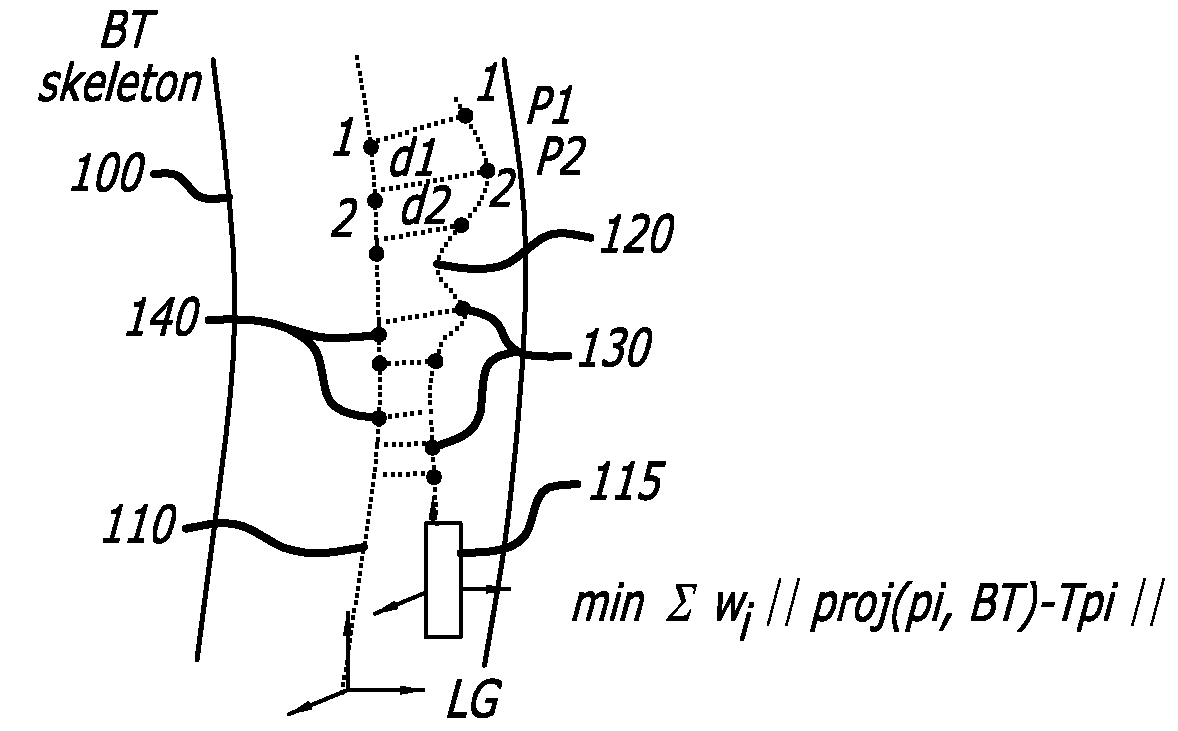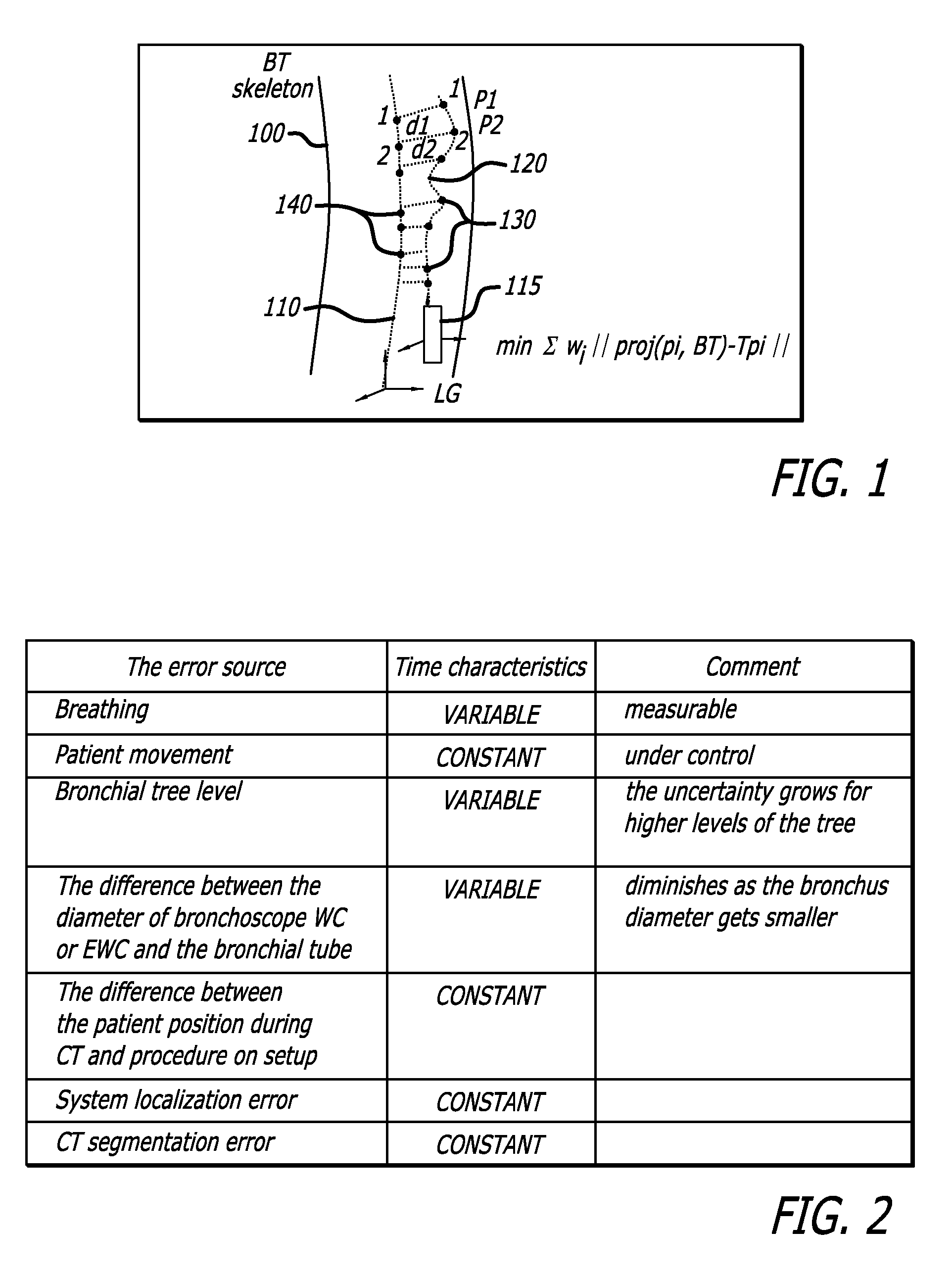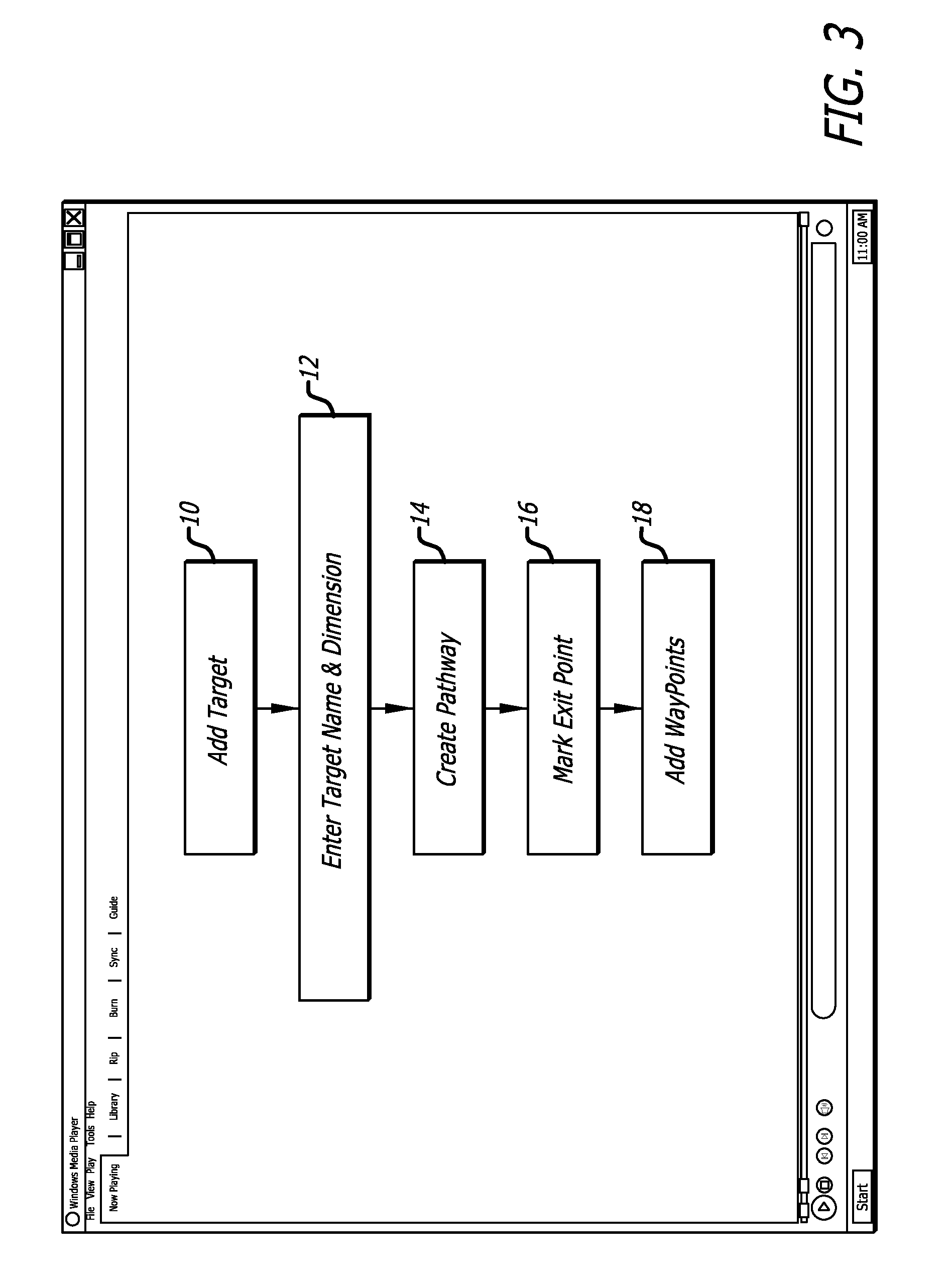Adaptive Navigation Technique For Navigating A Catheter Through A Body Channel Or Cavity
- Summary
- Abstract
- Description
- Claims
- Application Information
AI Technical Summary
Problems solved by technology
Method used
Image
Examples
Embodiment Construction
Method of Generating a Pathway to a Target in the Lungs
[0014]The present invention includes a unique method of generating a BT skeleton such that an accurate and logical pathway to the target may be formed. Generally, this method begins with an algorithm that automatically detects the trachea inside the CT volume, a three-dimensional image created from a plurality of CT scans, and uses this as a starting point for the generation of the BT. Next, a different segmentation step is applied to mark those voxels of the CT scan that represent air inside the bronchi. Next, the segmented and filtered data is skeletonized—center lines of the perceived airways are defined and used to build an anatomically valid virtual model of the airways.
[0015]More specifically, the method of generating a pathway to a target inside the lungs is outlined as follows:
[0016]1. Bronchial Tree Generation
[0017]Bronchial tree generation is a fully automatic process that runs in the background and is thus transparent...
PUM
 Login to View More
Login to View More Abstract
Description
Claims
Application Information
 Login to View More
Login to View More - R&D
- Intellectual Property
- Life Sciences
- Materials
- Tech Scout
- Unparalleled Data Quality
- Higher Quality Content
- 60% Fewer Hallucinations
Browse by: Latest US Patents, China's latest patents, Technical Efficacy Thesaurus, Application Domain, Technology Topic, Popular Technical Reports.
© 2025 PatSnap. All rights reserved.Legal|Privacy policy|Modern Slavery Act Transparency Statement|Sitemap|About US| Contact US: help@patsnap.com



